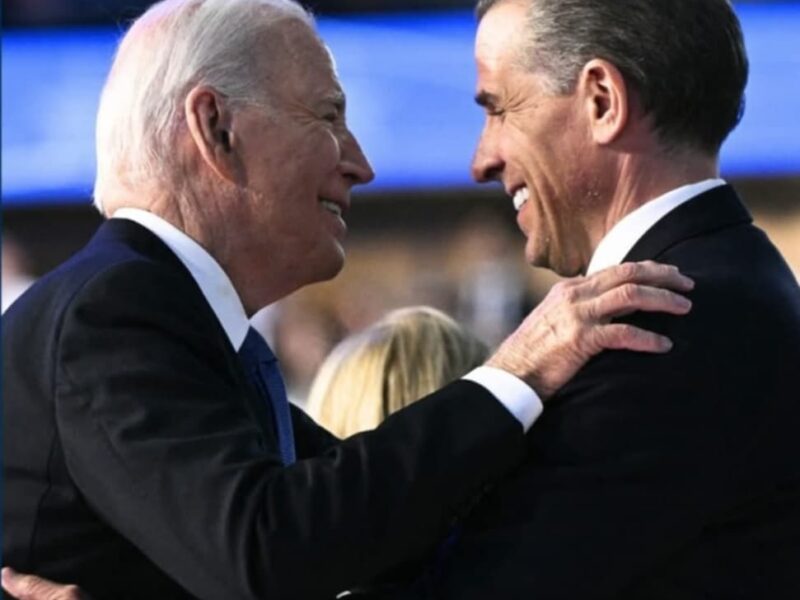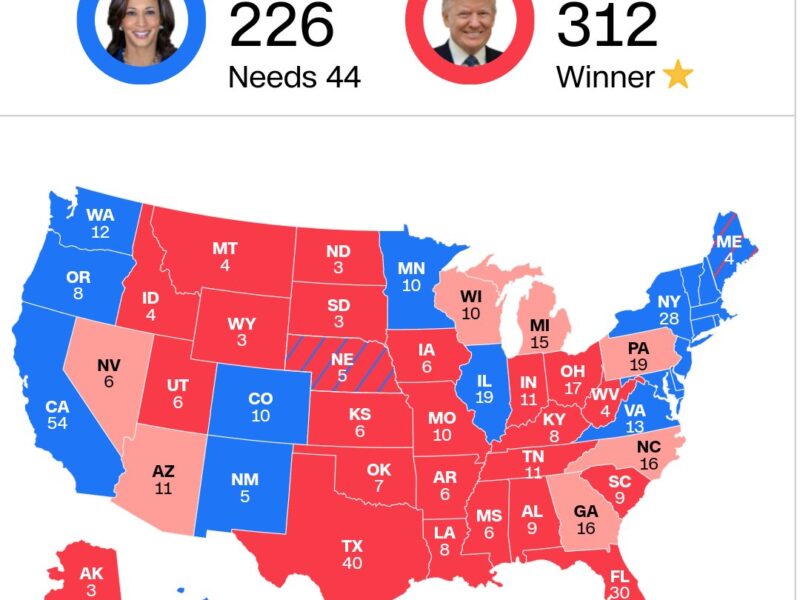Del Beccaro: Biden and Powell Are No Match for Reagan and Volker In the Fight Against Inflation
*First published in the Epoch Times
The Federal Reserve has finally awakened to the inflation crisis. Reported Inflation is nearly as high now as it was when President Reagan took office – actual inflation may well be higher. Unlike today, the 1980s Federal Reserve Chairman Paul Volker was determined to break the back of inflation – and one of the main reasons he succeeded was President Ronald Reagan.
Inflation is perhaps the worst economic ills. Its underlying causes are not easily unraveled and by the time it reaches the levels it has today, it takes a long, concerted effort to undo it. In the meantime, the pain it causes to the poor cannot be understated.
Keep in mind, the U.S. Census Bureau says that “49% of adults ages 55 to 66 had no personal retirement savings in 2017.” As of March of this year, “64%, of the U.S. population was living paycheck to paycheck, just shy of the high of 65% in 2020.” At the current rate of inflation, above 8%, an entire month of people’s income is being wiped out each year.
Worse yet, there is not end in sight. Even Treasurer Secretary Janet Yellen is finally admitting that. One of the reasons for that is the Biden Administration. It is continuing the very policies that have contributed to the inflation ravaging the economy. Another reason is the Federal Reserve, which is still not admitting its role in the crisis let alone sufficiently changing its ways.
So, why are we here?
Milton Friedman famously said: “Inflation is always and everywhere a monetary phenomenon, in the sense that it is and can be produced only by a more rapid increase in the quantity of money than in output.”
We know that government has restrained private sector output since March of 2020. Yes, that is the beginning of the government repression of what was a strong economy in response to Covid. You can argue about whether that was necessary, but you cannot argue that our governments reduced economic output across the country dramatically.
At the same time as that shutdown and ever since, our governments, state and federal, have been ramping up spending. Indeed, the federal government alone has spent $3.75 trillion in response to COVID-19. Total government spending in the United States reached $10 trillion in 2020 and 2021. That was an increase from $7.7 trillion in 2019. Of course, much of that was deficit spending.
Sure enough, the Federal deficit was an all-time high of $3.13 trillion in 2020. In 2021, it was $2.77 trillion. To accommodate that spending and to otherwise stimulate the economy, the Federal Reserve increased the existing money supply like never before.
Indeed, reports place that increase as high as 40% over the last two years. According to a recent Washington Post articles, the “Fed’s broadest measure of the money supply, called M2, is more than $21.6 trillion today, up from $15.5 trillion in February 2020.”
Along with economies around the Globe, the United States economy shrank in 2020. The United States’ drop was 3.4%. The U.S. economy has since rebounded BUT employment remains lower today than before Covid. If less people are working today than pre-Covid, obviously, the massively increased government spending is at the center of the increased economic figures.
However, there is a price to pay for “growth” based on government spending. It is called inflation. Returning to Milton Friedman, and in plain terms, we have had “a more rapid increase in the quantity of money than in output.”
To compound the problems caused by runaway spending and weak output, the Biden administration announced its concerted war on energy on day one – starting with the pipeline shutdown. To this day, countless Bide Administration regulations hamstring American energy production.
Ever since that first day, unnecessarily, energy prices have climbed in America. Long before Putin’s war, energy prices were on the rise in response to Biden policies, as the current Federal Reserve Chairman admitted recently.
All tolled, we now have historic inflation.
The problem for America is that Biden and Federal Reserve Chairman Powell are no match for this problem. They certainly do not measure up to 1981 President Reagan and Federal Reserve Chairman Paul Volker.
In a one-two inflation punch, Volker clamped down on the money supply and Reagan eased the costs on the U.S. economy by cutting regulations and taxes.
“Volcker, in office only two months, took the radical step of switching Fed policy from targeting interest rates to targeting the money supply.” Reagan, for his part, signed the Economic Recovery Tax Act of 1981. That law lowered taxes rates across the board including the top marginal tax bracket from 70% to 50% and the lowest bracket from 14% to 11%. Reagan also began a broad program of deregulation.
While it is true Volker’s tough actions resulted in recessions, Reagan’s lowering of the cost of doing business fostered a private sector revival of the economy without refueling inflation. In plain terms, Reagan concentrated on increasing private sector output.
By contrast, and despite the headwinds of the weak world economy and Putin’s war, Federal Reserve Chairman Jerome Powell has consistently “dismissed claims that the Fed’s money-printing is fueling today’s price spiral.” Instead, Powell continues to state that inflation in the United States is caused by “our demand,” which he intends to reduce with interest rate hikes.
In other words, Powell continues to misdiagnose one of the leading, underlying causes of the dramatic increase in inflation, i.e., the Federal Reserve policies of printing money. Or, he simply cannot admit is role in the problem.
In either case, he hasn’t signaled that he understands what Volker understood, that the growth in the money supply must be tackled, i.e., the first half of the Friedman equation: “a more rapid increase in the quantity of money than in output.”
Biden is similarly in denial. Biden not only continues to push for higher spending, he also continues to press for a “transition” to a green economy, the Biden Administration’s ever increasing regulations are increasing the costs of doing business in the United States, by some $200 billion – with no end in sight. Indeed, Janet Yellen recently said that he only way to fix energy crisis is to “move to renewables.”
Such statements fuel the psychology of inflation because they convince the rest of us that those in charge do not know what they are doing and intend to drive up costs on production.
Of course, there is not a whisper of tax relief for employers, employees or investors in Biden’s plans. To the contrary, Biden’s preference is to raise taxes on all of them.
Yes, it is true that problems abroad are exacerbating consumer prices here in America. The response to those external dynamics, therefore, cannot be runaway spending, more regulations and easy money. The opposite policies are needed.
In the final analysis, Biden and Powell are not lowering the costs to doing business in America. To the contrary, they are raising them, and interest rate hikes will likely cause a recession. In other words, they are restraining output at the same time they are pushing spending and far too easy monetary policies.
They have learned nothing from Volker, Reagan or Freidnman. As a result, inflation will last well beyond this year – badly damaging the economy and people’s lives along the way.







